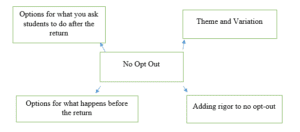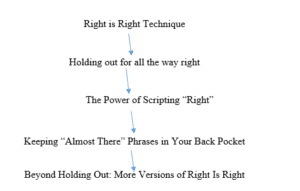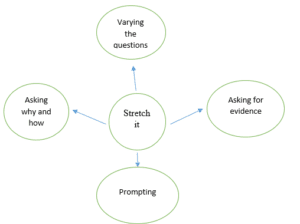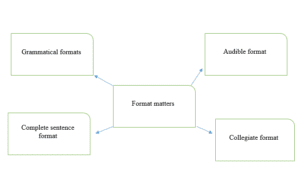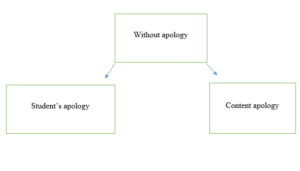Chapter 4 Summary and Graphic Organizers
Chapter four of the book discusses the five academic ethos techniques. The No opt-out technique, format matters technique, stretch it technique, without apology technique, and right is right techniques. The first is the No opt-out technique. This is the heart of interaction in class when discussing a topic, and students give wrong and right answers. Lemov (2021) encourages that it is okay to reward right answers, but it is good to politely use other cues when a kid gives incorrect answers (p.229). No opt-out techniques are to be used by teachers. Get in touch with us at eminencepapers.com. We offer assignment help with high professionalism.
Right is the second technique that concerns how to respond in the most advantageous manner for students when the response is almost right or pretty good but never a hundred percent. Even though teachers should set a high standard for learners, the standards are often unintentionally dropped. The right-to-right technique helps teachers achieve the desired result. The common strategies teachers can implement to use the right-is-right technique effectively are demonstrated below.
Stretch it is the third technique for teaching academic ethos. In a class with the greatest academic expectations, the right responses are never the end of the learning process; rather, they open the discussion for further challenge. Thus, the reward for the right responses is more challenging questions, which perfectly define stretch (Lemov 239). Stretch is a simple routine of responding positively or rewarding learners more often to build their curiosity and self-confidence. To effectively implement the stretch technique, the teacher should ask the why and how questions and use varying questions. Once the learners have mastered the skill, the teacher can consider asking them to apply it in a new, challenging environment. While applying the skill,, the teacher asks for evidence and will ultimately finish, prompting the learners to want to learn even more.
The fourth technique is format matters. This deals with the errors or format issues that teachers should act upon. These issues could be grammatical formats when students make errors in sentence construction, among other things. They also entail complete sentence format, audible format, and collegiate format. Complete sentence format entails asking learners to explain answers in complete sentences or full phrases to ensure they acquire thorough complex syntax formation and oral practice at sentences. Grammatical format details with the teacher asking learners to rephrase or phrase their response in Standard English. Audible formats entail reminding learners to speak audibly. Lastly, the collegiate format entails preparing students for some of the specific demands of university and college by pushing for comfort in Standard English and the language form to be more distinctive and more formal, often encountered in the college academic environment (Lemov 276).
The last technique is without apology. Without apology, the belief that children cannot do tasks or that content will be too hard or unenjoyable to learners can slip unexpectedly into our classes and mindsets (Lemov 284). This technique reminds us of some ways that can occur and some language that can help prevent this technique. There are two types of apology: an apology for content and an apology for students. Therefore, the entire chapter educates tutors on various techniques they can implement to achieve desired academic results.
Work Cited
Lemov, Doug. Teach like a champion 3.0: 63 Techniques that Put Students on the Path to College. John Wiley & Sons, 2021.
ORDER A PLAGIARISM-FREE PAPER HERE
We’ll write everything from scratch
Question

Chapter 4 Summary and Graphic Organizers
Teaching Like a Champion- Read & write a summary for each technique—Chapter 4
Make a graphic organizer for techniques and a summary, then attach the graphic organizers (visual chart/display) to the back of the DAR.
Example of a graphic organizer: important information about the chapter such as definitions, key tips, and main topic with a short note about it.

